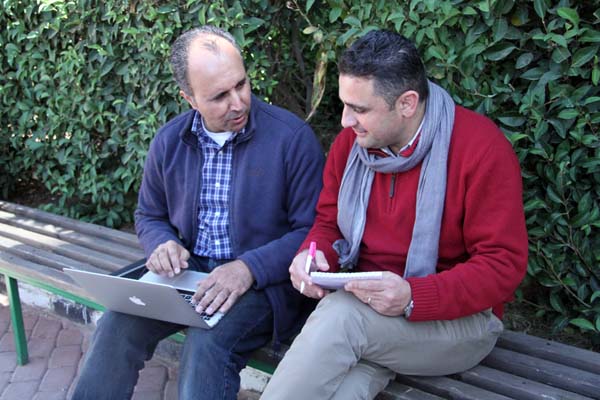Jerusalem| Researchers from Al- Quds University have developed a mechanism for the prevention of leishmaniasis by predicting the areas where human and animal diseases may spread in the skin and internal organs, by a study made in Libya which they could predict the areas where the diseases may spread in future periods by 2060. And this mechanism will be implemented in Palestine soon.
The importance of the study that was made by Dr. Ahmed Amro, the dean of Faculty of Pharmacy and Dr. Omar Hamarsheh of the Department of Life Sciences at the faculty of Science, was by predicting the areas of the Mediterranean basin, which may spread or decline in the future and by studying the atmospheric changes in the coming years especially with the spread of the disease and the increasing numbers of infected people in recent years.
The researchers predicted that the disease by 2060 will be confined within the desert of Libya, and will increase its prevalence in coastal areas in the northwest Libya. Yet they clarified that the results of this study are a warning to health policy makers, especially the World Health
Organization, to take the necessary precautions to reduce its spread, especially in the countries that will be most affected by the disease.
Leishmania is a disease transmitted by the sand fly, which is affected by various weather factors such as humidity, temperature and so on. Therefore, its spread increases in Palestine in the areas of Jordan valley. And the disease started taking a new direction, spreading in the agricultural areas near Tubas and the northern areas of the West Bank.
The researchers said, "We extracted the DNA from samples taken from the people infected with the disease and they were 800 samples. We examined these samples in the laboratories of the both Universities, Charite University and the German Wildau University, yet the analytical results identified that what causes the disease are two types of the parasite, first type is called Leishmania Tropica and the second type is called Leishmania Major.
This research is considered to be the result of a joint effort between the Universities, Al- Quds University in Palestine and Tripoli in Libya with both Universities in Germany, Charite University and Wildau University. The work took a place at Al-Quds University with an awarded grant from the German DAAD Foundation as a part of a partnership program which aims to recruit academics and researchers to teach and conduct research at prestigious universities around the world.
The research was published in August 2017 in the journal of PLOS NTD, which specializes in the dissemination of research in the field of science and medicine to keep pace with developments related to them.
Dr. Ahmed Amro, Dean of the Faculty of Pharmacy at Al-Quds University, is an associate professor and researcher in the field of infectious diseases. He has conducted many researches on leishmaniasis in the Mediterranean basin.
As for Dr. Omar Hamarsheh, he is a researcher and associate professor of Molecular Biology in the field of infectious diseases, especially leishmaniasis. He has a number of researches in this field and is a former Fulbright Scholar at the University of Notre Dame in the United States.
It is noteworthy that leishmaniasis is transmitted in addition to the sand fly, through blood transfusion or the use of contaminated medical needles, and spread of this disease in Palestine is taking a place for hundreds of years and bears the name of the pill Jericho. the main source of this disease is an animal called Litter Rock. Moreover, the Palestinian Ministry of Health gives free treatment and diagnosis for those affected by the disease, and sprays areas suspected of the presence of the insect causing the disease.
The spread of the disease has increased in areas of armed conflict in Libya as a result of the collapse of the health situation during the recent political events that led to the displacement of the population to areas whose environmental conditions are ripe for the mosquito carrying the disease to live.
